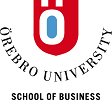No 2009:7: Alcohol Use and Social Interactions among Adolescents Do peer-effects exist within and/or between the majority population and immigrants?
Mikael Svensson ()
Additional contact information
Mikael Svensson: Department of Business, Economics, Statistics and Informatics, Postal: Örebro University, Swedish Business School, SE - 701 82 ÖREBRO, Sweden
Abstract: Are adolescents who attend schools with a high level of alcohol use more likely to use alcohol themselves? This paper analyzes peer-effects in adolescent alcohol use based on a survey of 13,337 adolescents in Sweden in 2005. The empirical analysis uses multi-level logistic model to handle non-observable heterogeneity between the schools and the results show that attending a school with a high level of alcohol use is a strong predictor of alcohol use for the individual. However, a positive association is only seen within Swedes and within non-Swedes (1st and 2nd generation immigrants). Between Swedes and non-Swedes there is actually a negative association, i.e. if many Swedes drink in a certain school, alcohol use among non-Swedes is lower (and vice-versa). An exception to these results are schools with a very low share of non-Swedish adolescents, where non-Swedes alcohol use also is positively associated with Swedish peers’ alcohol use.
Keywords: Alcohol use; Adolescents; Peer-effects; Immigrants; Sweden
22 pages, May 13, 2009
- Published as
- Mikael Svensson, (2010), 'Alcohol Use and Social Interactions among Adolescents Do peer-effects exist within and/or between the majority population and immigrants?', Social Science & Medicine, vol 70, pages 1858-1864
Questions (including download problems) about the papers in this series should be directed to ()
Report other problems with accessing this service to Sune Karlsson ().
RePEc:hhs:oruesi:2009_007This page generated on 2024-09-13 22:16:32.

